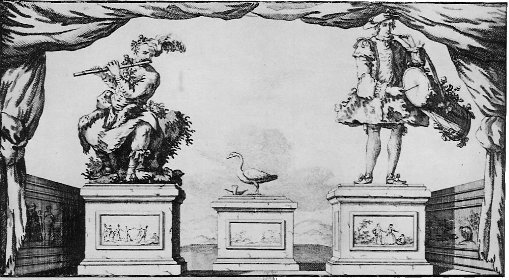Chapter 2: Posthuman¶
Introduction¶
The idea of a thinking machine has been the subject matter of a lot of stories and artworks. One only has to think about the story of Pinocchio (Collodi 1881) or of Frankenstein (Shelley, 1818) to get a glimps of the many manifestations of this idea. BUt already in 1764, the French inventor and artists Jacques Vaucanson created a lot of intricate automata, most famously the digesting duck. And already in early Judaism we hear stories about the Golem (גּוֹלֶם): an animate anthropomorphic being which is entirely created from inanimate matter.

In 1950, Alan Turing re-visited this project with his seminal paper Can Machines Think? (Turing, 1950). In his paper, Turing, who of course can be seen as the inventor of modern computing machinery, argues for the idea that one day machines will be able to think – or at least that one day a human being would be unable to say whether his interlocutor is another human or a machine.
Of course, nowadays we witness a development towards the fulfillment of his prophecy: artifacts such as Amazon's Alexa can listen to us and respond in a (more of less) meaningful manner. In a related vein we are no longer the only beings that can play Go, or the only unfeathered bipeds that can walk through a snowy forest, as is witnessed by the video below - only one example of the many impressive robots made by Boston Dynamics.
And of course artifacts such as ChatGPT put the whole question of what is means to be human in a new light...
All these observations make for an interesting question: if technological artifacts are increasingly capable to perform humanlike actions, what will be left for mankind? Will we survive our own technological progeny, or are we the first ever species to wittingly create our own evolutionary successor?
Session¶
During the sessions, we will discuss the way in which man interacts with machines and discuss the role technology plays in our being as a species. Our contemporary society is, of course, thoroughly technological – almost every action we perform requires some kind of technological artefact. It is technology (as seen as the physical manifestation of the scientific worldview that was introduced in the first week) that makes our modern lives possible.
To give this discussion some historical context, we show the intricate relationship between the evolution of us as a species and the technological artefacts that evolved during this evolution. Especially if and when we remove the (artificial and relatively recent) distinction between works of art and other artefacts, it becomes clear that we have always been a technolocial hybrid.
Inspired by what we call the arts, technology removes us from the immediately given and enables us to envision a future that is different from the immediate reality. According to some, this creates a feeling of emptiness, longing and frustration that eventually is the driving force of all of history.
We will look at several technological developments in order to give this question some context. In this context we will introduce some artworks and texts that shed different lights on these subjects.